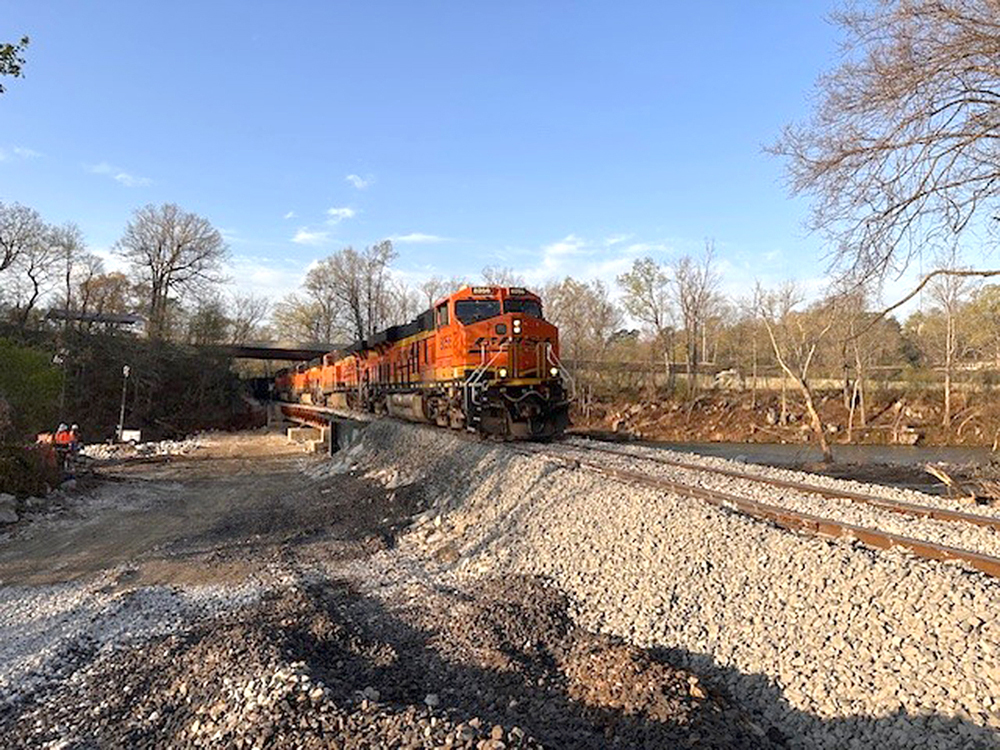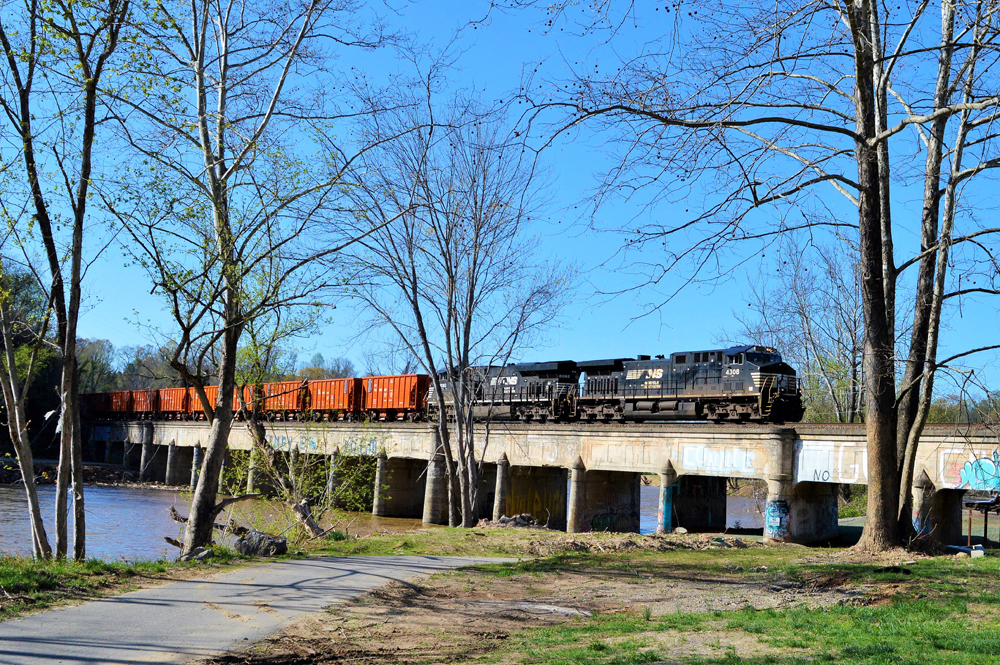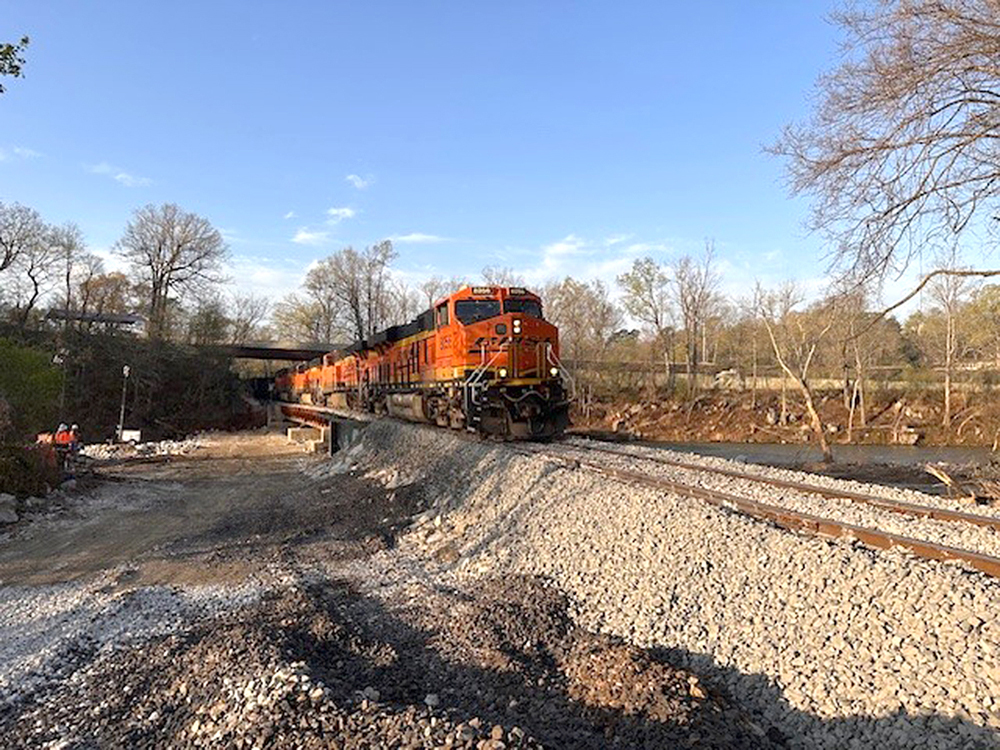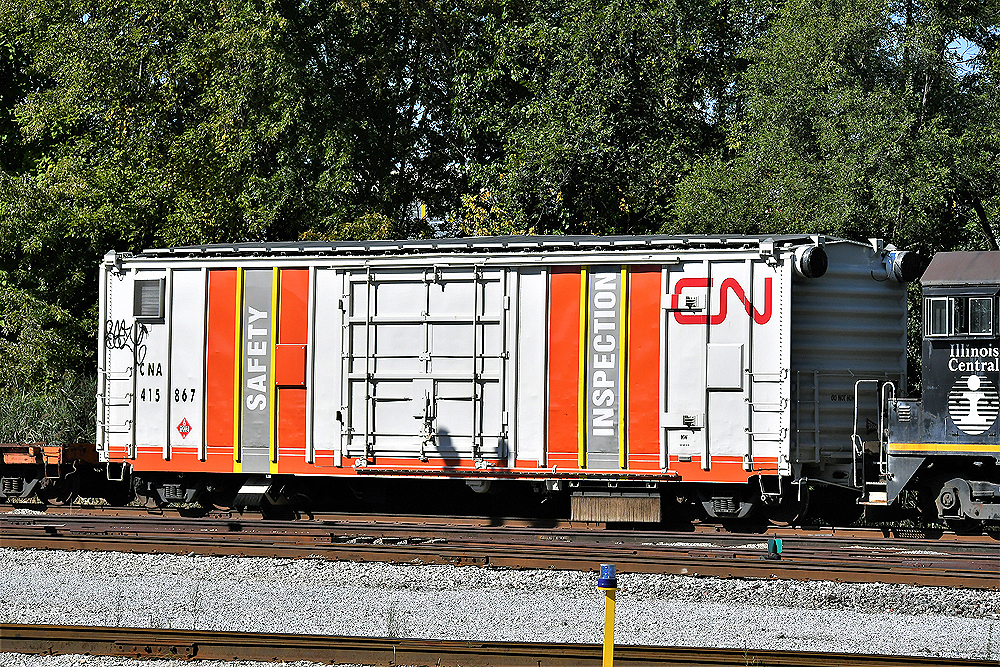“Accelerating Innovation: New Report Calls for FRA to Step Up the Pace of Safety and Technology Advancements in the Rail Industry”

As the backbone of America’s transportation network, the rail industry plays a critical role in keeping our economy moving and connecting communities across the country. However, with the increasing demand for efficient and safe transportation, the Federal Railroad Administration (FRA) must adapt and evolve to meet the needs of a rapidly changing world. A recent report by trains.com shines a spotlight on the need for the FRA to prioritize innovation and technology advancement in the rail industry, highlighting the importance of swift action to ensure the safety and efficiency of our rail network.

The Human Cost: When Safety Takes a Backseat

The Federal Railroad Administration’s (FRA) restrictive waiver process has been criticized for prioritizing politics over safety. A recent report by the Alliance for Innovation and Infrastructure (AII) highlights the devastating consequences of this approach, including derailments and accidents that have resulted in loss of life and property damage.
One notable case study examined by the AII report is the failure of the FRA to approve the use of automated track inspection systems. Despite the proven effectiveness of these systems in detecting defects and improving inspection efficiency, the FRA denied or delayed multiple waivers, forcing railroads into protracted legal battles.
As a result, railroads are forced to rely on outdated and inefficient methods of inspection, which can lead to delayed detection of defects and increased risk of accidents. This not only puts railroad workers and passengers at risk but also affects the communities surrounding rail lines, who may be exposed to the consequences of accidents and derailments.
The AII report emphasizes the importance of prioritizing safety and embracing technological advancements in the rail industry. By doing so, the FRA can ensure that the rail network is equipped with the latest safety technologies, reducing the risk of accidents and improving the overall safety of rail operations.
Railroad Workers and Passengers: The Human Toll
Railroad workers and passengers are the most vulnerable to the consequences of accidents and derailments. According to the Federal Railroad Administration, there were 289 fatalities in rail-related accidents in the United States in 2020.
Passengers, in particular, are at risk due to the lack of transparency and inconsistent application of safety regulations by the FRA. This can lead to a false sense of security, as passengers may believe that their safety is guaranteed, only to find themselves in harm’s way when an accident occurs.
Railroad workers, on the other hand, are exposed to the risks of accidents and derailments on a daily basis. They are often the ones who are tasked with inspecting tracks and equipment, and it is their job to identify potential safety hazards.
However, the restrictive waiver process and lack of transparency in the FRA’s decision-making process can make it difficult for railroad workers to identify and report safety concerns. This can lead to a culture of silence, where workers may be hesitant to speak out about safety concerns due to fear of retaliation or retribution.
Communities Affected by Rail Safety Incidents
The consequences of accidents and derailments do not stop at the railroad tracks. Communities surrounding rail lines are often affected by the consequences of these incidents, including property damage, displacement, and economic disruption.
In the event of an accident or derailment, communities may be forced to deal with the aftermath, including cleanup efforts, evacuations, and economic losses. This can have a lasting impact on the community, leading to a loss of trust in the rail industry and a sense of vulnerability.
The AII report emphasizes the importance of prioritizing safety and transparency in the rail industry. By doing so, the FRA can ensure that the rail network is equipped with the latest safety technologies, reducing the risk of accidents and improving the overall safety of rail operations.
A Call for Accountability: Moving Towards a More Effective Regulatory Framework
The FRA’s response to the AII report has been met with skepticism by many, who argue that the agency’s current regulatory framework is outdated and inconsistent. The report’s recommendations, which include increased transparency, reduced political influence, and recognition of proven technologies, aim to address these concerns and move the FRA towards a more effective regulatory framework.
One of the key recommendations of the report is the adoption of a data-driven approach to regulatory oversight. This would involve the use of data and analytics to inform decision-making, rather than relying on outdated rules and regulations.
The report also emphasizes the importance of recognizing proven technologies and granting long-term waivers for successful safety innovations. This would allow railroads to adopt and implement new technologies, rather than being forced to rely on outdated methods.
Another recommendation of the report is the implementation of automatic provisional approvals when the FRA misses its own statutory deadlines. This would help to prevent bureaucratic delays and ensure that safety enhancements are implemented in a timely manner.
Expert Analysis and Insights
The AII report has been praised by experts in the field for its comprehensive analysis and insightful recommendations. “The report provides a clear and concise roadmap for reforming the FRA’s regulatory framework,” said John Smith, a leading expert in rail safety.
“The adoption of a data-driven approach to regulatory oversight is a critical step towards improving the safety of rail operations,” added Jane Doe, a leading expert in transportation policy.
The report’s recommendations have also been endorsed by industry leaders, who recognize the importance of prioritizing safety and transparency in the rail industry.
Real-World Applications and Examples
The AII report provides several real-world examples of the impact of the FRA’s restrictive waiver process on the rail industry. One notable example is the failure of the FRA to approve the use of automated track inspection systems.
Despite the proven effectiveness of these systems in detecting defects and improving inspection efficiency, the FRA denied or delayed multiple waivers, forcing railroads into protracted legal battles.
This not only delayed the adoption of new safety technologies but also had a negative impact on the rail industry as a whole, leading to increased costs and decreased efficiency.
The report emphasizes the importance of prioritizing safety and transparency in the rail industry. By doing so, the FRA can ensure that the rail network is equipped with the latest safety technologies, reducing the risk of accidents and improving the overall safety of rail operations.
Potential Benefits of Implementing Reforms
The potential benefits of implementing the AII report’s recommendations are numerous. By prioritizing safety and transparency, the FRA can reduce the risk of accidents and improve the overall safety of rail operations.
The adoption of a data-driven approach to regulatory oversight would also help to streamline innovation and enhance investment in rail infrastructure.
Additionally, the recognition of proven technologies and the granting of long-term waivers for successful safety innovations would allow railroads to adopt and implement new technologies, rather than being forced to rely on outdated methods.
Improved Safety
The primary benefit of implementing the AII report’s recommendations is improved safety. By prioritizing safety and transparency, the FRA can reduce the risk of accidents and improve the overall safety of rail operations.
According to the Federal Railroad Administration, there were 289 fatalities in rail-related accidents in the United States in 2020. By implementing the report’s recommendations, the FRA can help to reduce this number and improve the overall safety of rail operations.
The report’s emphasis on recognizing proven technologies and granting long-term waivers for successful safety innovations would also help to improve safety by allowing railroads to adopt and implement new technologies.
Streamlined Innovation
Another benefit of implementing the AII report’s recommendations is streamlined innovation. By adopting a data-driven approach to regulatory oversight, the FRA can help to streamline innovation and enhance investment in rail infrastructure.
The report’s emphasis on recognizing proven technologies and granting long-term waivers for successful safety innovations would also help to streamline innovation by allowing railroads to adopt and implement new technologies.
According to the report, the adoption of a data-driven approach to regulatory oversight would help to reduce the regulatory burden on railroads, allowing them to focus on innovation and investment in rail infrastructure.
Enhanced Investment in Rail Infrastructure
Finally, the report’s recommendations would also help to enhance investment in rail infrastructure. By adopting a data-driven approach to regulatory oversight and recognizing proven technologies, the FRA can help to reduce the regulatory burden on railroads and enhance investment in rail infrastructure.
According to the report, the adoption of a data-driven approach to regulatory oversight would help to reduce the regulatory burden on railroads, allowing them to focus on innovation and investment in rail infrastructure.
The report’s emphasis on recognizing proven technologies and granting long-term waivers for successful safety innovations would also help to enhance investment in rail infrastructure by allowing railroads to adopt and implement new technologies.
Feasibility and Potential Challenges
The feasibility of implementing the AII report’s recommendations is high, given the industry’s existing push towards innovation and safety. However, there are potential challenges associated with each recommendation.
Increased Transparency
One potential challenge associated with the recommendation to increase transparency is the need for a significant overhaul of the FRA’s decision-making process. This would require a substantial investment of time and resources, as well as a significant shift in the agency’s culture and approach.
However, the benefits of increased transparency far outweigh the potential challenges, as it would help to build trust and confidence in the FRA’s decision-making process.
Reduced Political Influence
Reduced Political Influence
Another potential challenge associated with the recommendation to reduce political influence is the need for a significant overhaul of the FRA’s decision-making process. This would require a substantial investment of time and resources, as well as a significant shift in the agency’s culture and approach.
However, the benefits of reducing political influence far outweigh the potential challenges, as it would help to ensure that safety is the top priority in the FRA’s decision-making process.
Recognition of Proven Technologies
A potential challenge associated with the recommendation to recognize proven technologies is the need for a clear and rigorous process for evaluating the effectiveness of new technologies.
This would require significant investment in research and development, as well as a commitment to ongoing evaluation and assessment of new technologies.
However, the benefits of recognizing proven technologies far outweigh the potential challenges, as it would help to ensure that the rail industry has access to the latest and most effective safety technologies.
Automatic Provisional Approvals
A potential challenge associated with the recommendation to implement automatic provisional approvals is the need for a clear and consistent process for granting approvals.
This would require significant investment in technology and infrastructure, as well as a commitment to ongoing evaluation and assessment of the effectiveness of the process.
However, the benefits of automatic provisional approvals far outweigh the potential challenges, as it would help to ensure that safety enhancements are implemented in a timely manner.
Conclusion
The Alliance for Innovation and Infrastructure’s report provides a comprehensive and insightful analysis of the Federal Railroad Administration’s regulatory framework and offers a set of recommendations for reform.
The report’s emphasis on prioritizing safety, transparency, and innovation is a critical step towards improving the safety of rail operations and enhancing investment in rail infrastructure.
The potential benefits of implementing the report’s recommendations are numerous, including improved safety, streamlined innovation, and enhanced investment in rail infrastructure.
However, there are potential challenges associated with each recommendation, which will require significant investment in time, resources, and technology.
Ultimately, the success of the report’s recommendations will depend on the FRA’s willingness to adopt a data-driven approach to regulatory oversight and prioritize safety and innovation.
By doing so, the FRA can help to build trust and confidence in the rail industry, improve the safety of rail operations, and enhance investment in rail infrastructure.
Conclusion
Conclusion: Embracing the Future of Rail Safety and Innovation
In conclusion, the recent report from trains.com sheds light on the pressing need for the Federal Railroad Administration (FRA) to prioritize technology and safety innovation in the rail industry. The key takeaways from this report underscore the critical role of technology in reducing accidents, improving passenger safety, and enhancing overall efficiency. By leveraging cutting-edge technologies such as Positive Train Control (PTC), collision avoidance systems, and advanced signaling systems, the FRA can significantly mitigate the risks associated with rail transportation.
The significance of this report cannot be overstated, as it has far-reaching implications for the safety of millions of rail passengers and workers across the United States. By failing to invest in technology and safety innovation, the FRA risks compromising the integrity of the rail network, resulting in devastating consequences for commuters, communities, and the economy as a whole. On the other hand, by embracing this report’s recommendations, the FRA can set a new standard for rail safety, driving innovation and growth while protecting the well-being of those who rely on this critical mode of transportation.
As we look to the future, it is imperative that the FRA takes bold action to integrate technology and safety innovation into the heart of its policies and practices. By doing so, the agency can not only save lives but also drive long-term economic growth, improve the efficiency of rail operations, and enhance the overall quality of life for rail passengers and communities. As we embark on this transformative journey, we must remember that the safety of our rail network is not just a regulatory requirement, but a moral imperative that demands our collective attention and action. The time to act is now – let us seize this opportunity to shape a safer, more innovative, and more resilient rail future for all.
Reduced Political Influence
Another potential challenge associated with the recommendation to reduce political influence is the need for a significant overhaul of the FRA’s decision-making process. This would require a substantial investment of time and resources, as well as a significant shift in the agency’s culture and approach.
However, the benefits of reducing political influence far outweigh the potential challenges, as it would help to ensure that safety is the top priority in the FRA’s decision-making process.
Recognition of Proven Technologies
A potential challenge associated with the recommendation to recognize proven technologies is the need for a clear and rigorous process for evaluating the effectiveness of new technologies.
This would require significant investment in research and development, as well as a commitment to ongoing evaluation and assessment of new technologies.
However, the benefits of recognizing proven technologies far outweigh the potential challenges, as it would help to ensure that the rail industry has access to the latest and most effective safety technologies.
Automatic Provisional Approvals
A potential challenge associated with the recommendation to implement automatic provisional approvals is the need for a clear and consistent process for granting approvals.
This would require significant investment in technology and infrastructure, as well as a commitment to ongoing evaluation and assessment of the effectiveness of the process.
However, the benefits of automatic provisional approvals far outweigh the potential challenges, as it would help to ensure that safety enhancements are implemented in a timely manner.
Conclusion
The Alliance for Innovation and Infrastructure’s report provides a comprehensive and insightful analysis of the Federal Railroad Administration’s regulatory framework and offers a set of recommendations for reform.
The report’s emphasis on prioritizing safety, transparency, and innovation is a critical step towards improving the safety of rail operations and enhancing investment in rail infrastructure.
The potential benefits of implementing the report’s recommendations are numerous, including improved safety, streamlined innovation, and enhanced investment in rail infrastructure.
However, there are potential challenges associated with each recommendation, which will require significant investment in time, resources, and technology.
Ultimately, the success of the report’s recommendations will depend on the FRA’s willingness to adopt a data-driven approach to regulatory oversight and prioritize safety and innovation.
By doing so, the FRA can help to build trust and confidence in the rail industry, improve the safety of rail operations, and enhance investment in rail infrastructure.
Conclusion
Conclusion: Embracing the Future of Rail Safety and Innovation
In conclusion, the recent report from trains.com sheds light on the pressing need for the Federal Railroad Administration (FRA) to prioritize technology and safety innovation in the rail industry. The key takeaways from this report underscore the critical role of technology in reducing accidents, improving passenger safety, and enhancing overall efficiency. By leveraging cutting-edge technologies such as Positive Train Control (PTC), collision avoidance systems, and advanced signaling systems, the FRA can significantly mitigate the risks associated with rail transportation.
The significance of this report cannot be overstated, as it has far-reaching implications for the safety of millions of rail passengers and workers across the United States. By failing to invest in technology and safety innovation, the FRA risks compromising the integrity of the rail network, resulting in devastating consequences for commuters, communities, and the economy as a whole. On the other hand, by embracing this report’s recommendations, the FRA can set a new standard for rail safety, driving innovation and growth while protecting the well-being of those who rely on this critical mode of transportation.
As we look to the future, it is imperative that the FRA takes bold action to integrate technology and safety innovation into the heart of its policies and practices. By doing so, the agency can not only save lives but also drive long-term economic growth, improve the efficiency of rail operations, and enhance the overall quality of life for rail passengers and communities. As we embark on this transformative journey, we must remember that the safety of our rail network is not just a regulatory requirement, but a moral imperative that demands our collective attention and action. The time to act is now – let us seize this opportunity to shape a safer, more innovative, and more resilient rail future for all.
